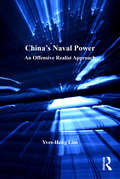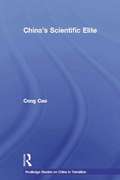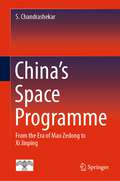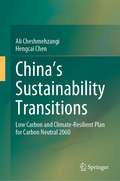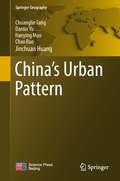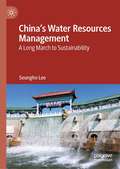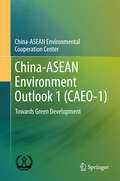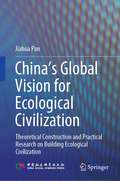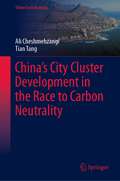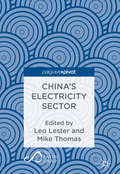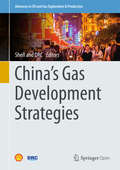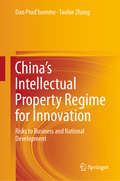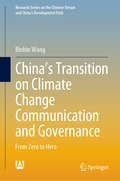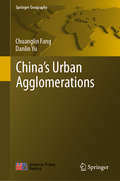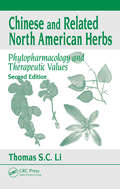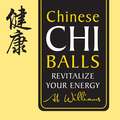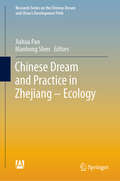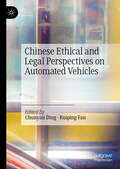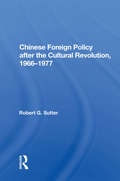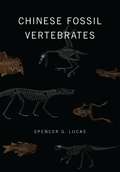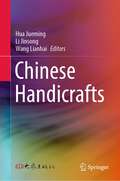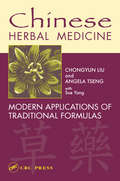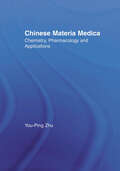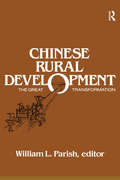- Table View
- List View
China's Naval Power: An Offensive Realist Approach (Corbett Centre for Maritime Policy Studies Series)
by Yves-Heng LimThe rapid modernization of the Chinese Navy is a well-documented reality of the post-Cold War world. In two decades, the People's Liberation Army Navy has evolved from a backward force composed of obsolete platforms into a reasonably modern fleet whose growth is significantly shaking the naval balance in East Asia. The rationale behind China's contemporary rise at sea remains, however, difficult to grasp and few people have tried to see how the current structure of the international system has shaped Chinese choices. This book makes sense of Chinese priorities in its naval modernization in a 'robust' offensive realist framework. Drawing on Barry Posen's works on sources of military doctrine, it argues that the orientation of Beijing's choices concerning its naval forces can essentially be explained by China's position as a potential regional hegemon. Yves-Heng Lim highlights how a rising state develops naval power to fulfil its security objectives, a theoretical perspective that goes farther than the sole Chinese case.
China's Scientific Elite (Routledge Studies on China in Transition #Vol. 21)
by Cong CaoChina's Scientific Elite is a study of those scientists holding China's highest academic honour - membership of the Chinese Academy of Sciences. Having carried out extensive systematic data collection of CAS members Cao examines the social stratification system of the Chinese science community and the way in which politics and political interference has effected the stratification. The book then goes on to compare the Chinese system to the stratification of the US scientific elite. The conclusions are fascinating, not least because one national elite resides in a democratic liberal social system, and the other in an authoritarian social system.
China's Space Programme: From the Era of Mao Zedong to Xi Jinping
by S. ChandrashekarThis book comprehensively covers the history and current developments of space programme of China. It presents the complete story of China’s space programme from its origins through to present day activities on the International Space Station. This monograph further discusses the role of China’s space strategy in its emergence as a major power on the world stage. The book also presents the context of China’s space program within the larger narrative of international space development. The book binds together the diverse political, military, economic and technology aspects into a coherent understanding and explains their role in the establishment and growth of Chinese space programme. Given the contents, this book will be a valuable source of information for students, researchers, and historians in the area of space studies.
China's Sustainability Transitions: Low Carbon and Climate-Resilient Plan for Carbon Neutral 2060
by Ali Cheshmehzangi Hengcai ChenThis book considers the impact of global climate change, advocating to promote sustainable development from the perspective of low carbon and climate resilience, by reducing carbon emissions in different aspects of urban and regional development. As the world's largest emitter of carbon dioxide, China is continuously exploring a sustainable path to achieve the momentous goal of 2060 carbon neutrality. In addition, this book reviews and summarizes China's green development and predicts the transformation of China's carbon emission and energy structure before and after the peak of carbon emission in 2030. It examines the role of governance in decarbonization efforts, focusing on decision making processes, policies and regulations, as well as the significance of regions, cities, and communities. This book highlights typical methods of implementing and achieving low carbon development in light of China's practical situation, which helps to resolve some of the problems that may arise in achieving the carbon neutral goal. Therefore, this book is suitable for the reference of scholars in low-carbon environment science, sustainable urban development, and other related fields. It also provides inspiration for China's medium and long-term sustainable development plans in the future.
China's Urban Pattern (Springer Geography)
by Chuanglin Fang Danlin Yu Hanying Mao Chao Bao Jinchuan HuangThe book embarks on the tasks to systematically analyze the macro background of the spatial patterns of China’s urban development, the theoretical foundations and framework, and its changing trajectory. From a quantitative perspective, we attempt to evaluate the rationale behind the spatial patterns of China’s urban development and systematically simulate the various scenarios. From the simulation results, we propose the optimizing goals, priorities, models, and strategies for the spatial patterns of China’s urban development. The work in this book attempts to provide constructive suggestions and potential strategies to support the effort to optimize the spatial patterns of China’s urban development. It would be a valuable reference for planning departments, development and reform committees, and science and technology administrative departments at various governmental levels. It could also be a valuable addition to graduate students of urban planning, urban development, urban geography and relevant disciplines.
China's Water Resources Management: A Long March to Sustainability
by Seungho LeeThis book investigates water resources management and policy in China over the last two decades with a core focus on the role of water for socioeconomic development and sustainability. Recent policies, such as the Three Red Lines and the Water Ten Plan are evaluated for sustainable water supply, use and quality control. The book appraises solutions through demand management, water rights and pollution trading, virtual water and water footprint. Supply management is discussed taking examples from the Three Gorges Dam and the South North Water Transfer Project. The water market is investigated uncovering the active engagement of the private sector and includes discussions on how transboundary rivers demonstrate China’s engagement with its riparian countries for benefit sharing. This book will be an invaluable reference for researchers in the field as well as practitioners and students who have an interest in water and development in China.
China-ASEAN Environment Outlook 1 (CAEO-1)
by China-ASEAN Environmental CooperationThis book presents a comprehensive analysis of the status and progress of China-ASEAN green development and examines the common development issues in China and ASEAN Member States (AMSs). It also explores development trends within the framework of global and regional environmental governance and discusses the approaches towards green development in China and AMSs, offering its own definition of green development and using a “pressure-state-response” (PSR) model to build a framework for assessing green development. The book includes typical policy measures and numerous practices for green development in China and AMSs in the form of tables, figures and boxes. Based on detailed analysis, it argues that the global 2030 Agenda for Sustainable Development brings significant opportunities to China and AMSs, that the ongoing pragmatic cooperation should be further advanced, and that a connection between the Belt and Road Initiative and green ASEAN Community should be established to achieve regional sustainable development. As such it furthers readers’ understanding of environment and development and practical policy advice for promoting China-ASEAN cooperation on environment and green development. Intended for decision makers from the government, business sector, and civil societies who are working to boost green development and China-ASEAN cooperation, it is also a valuable resource for government officials, researchers and non-experts interested in creating a balanced relationship between the environment and development.
China‘s Global Vision for Ecological Civilization: Theoretical Construction and Practical Research on Building Ecological Civilization
by Jiahua PanThis book addresses the core tenets, logic, methodology and practice of Xi Jinping’s thoughts on ecological civilization. It traces the theoretical origins of his ideas and comprehensively discusses their theoretical characteristics and historical status, while also demonstrating that they represent a self-contained theoretical system and discourse system. In addition, the book offers guidelines on putting his thoughts into practice in connection with the new era of socialist ecological civilization in China, implementing the 2030 sustainable development agenda action plan and contributing to global ecological security.
China’s City Cluster Development in the Race to Carbon Neutrality (Urban Sustainability)
by Ali Cheshmehzangi Tian TangThe scope of this book is to map China’s city clusters and their individual directions for the national-level strategies in line with the 2060 carbon neutrality plan. Since China announced the carbon neutrality plan in autumn 2020, no study has looked at the role of city clusters in achieving this long-term plan. Hence, this study is believed to be the first attempt to explore this important topic from the city cluster perspective. It explores the challenges, opportunities, and directions of all 19 city clusters, allowing readers to have a clear picture of China’s historical and ongoing progress, as well as the challenges and opportunities that lie ahead. In a short time, China’s city clusters have helped boost regional economic development, infrastructure development, trade and business, and better urban–rural integration. With enhanced coordination of connection and transport networks in and between the city clusters, we see a growing number of initiatives beyond just the initial economic strategies. The dual approach of top-down policies and infrastructure systems and bottom-up governance and investments has helped China consider urban–rural development strategies and regional sustainable development. These factors are essential to be explored from the city cluster perspective and in line with China’s sustainable development and carbon neutrality directions. Hence, the book covers these points holistically, ensuring that regional planning and development are favored in the face of uneven urbanization trends.We anticipate this book to be a valuable resource for local governments and authorities, urban planners and practitioners, developers, and urban researchers. While the focus is on China’s city clusters, we believe there are similar examples elsewhere. Hence, lessons learnt from this book could apply to other countries, regions, and subregions. Lastly, the book aims to put regional sustainable development at the heart of longer-term strategies and plans, such as the case of China’s carbon neutrality plan.
China’s Electricity Sector
by Mike Thomas Leo LesterThis book provides a concise introduction to China’s electricity sector, suitable for university students and business analysts. It is business focused, combining an introduction from an established regional electricity consultancy with five academic chapters covering governance, market stakeholders and reform, wind and solar power, environmental regulation, and developments in financing. It is written in an accessible but rigorous style for people with limited knowledge of the topic, with minimal jargon but full referencing throughout the academic chapters. Each academic chapter starts with a summary and three key points to guide the reader’s understanding.
China’s Gas Development Strategies (Advances in Oil and Gas Exploration & Production)
by Shell International Ltd The Development Research CenterThis book is open access under a CC BY 4.0 license. This book examines how China can increase the share of natural gas in its energy system. China’s energy strategy has global ramifications and impact, and central to this strategy is the country’s transition from coal to gas. The book presents the culmination of a two-year collaboration between the Development Research Center of the State Council (DRC) and Shell. With the Chinese government’s strategic aim to increase the share of gas in the energy mix from 5.8% in 2014 to 10% and 15% in 2020 and 2030 respectively, the book outlines how China can achieve its gas targets. Providing both quantifiable metrics and policy measures for the transition, it is a much needed addition to the literature on Chinese energy policy. The research and the resulting recommendations of this study have fed directly into the Chinese government’s 13th Five-Year Plan, and provide unique insights into the Chinese government and policy-making.Due to its global impact, the book is a valuable resource for policy makers in both China and the rest of the world.
China’s Intellectual Property Regime for Innovation: Risks to Business and National Development
by Dan Prud’homme Taolue ZhangThis book evaluates the risks that China’s intellectual property (IP) regime poses to innovation. China's IP regime has been heavily criticized as potentially stifling innovation. However, the country’s innovation capabilities have risen significantly and major reforms have recently been made to its IP regime. How risky, really, is China's IP regime for innovation? This book investigates this question at different units of analysis based on a multidisciplinary assessment involving law, management, economics, and political science. Specifically, it critically appraises China's substantive IP laws, measures for boosting patent quantity and quality, measures for transmitting and exploiting technological knowledge, new experimental IP measures, and China's systems for administering and enforcing IP. Practitioners and scholars from various backgrounds can benefit from the up-to-date analysis as well as the practical managerial tools provided, including risk assessment matrices for businesses and recommendations for institutional reform.
China’s Transition on Climate Change Communication and Governance: From Zero to Hero (Research Series on the Chinese Dream and China’s Development Path)
by Binbin WangThis book provides a two-level analytical framework and empirical study to analyze the reason and process of China’s transition that is from a follower to driver in the field of global climate governance, and is especially valuable the dialogues and cooperation between the government, media and civil society. Nowadays, China shows strong leadership to push the process of global climate governance. It’s the first and fastest time in the past 40-year history of China’s Opening-up that China wins the international respect and trust in one of the issues of global governance. What experiences can be summarized? What dynamic situations and new possibilities emerged after Trump, the U.S. president announced to withdraw from the Paris Agreement? How to move forward based on the existing success? This timely book offers new lens for international readers to understand China’s effort domestically and internationally in the field of climate change and illustrate the outlook of the climate governance in the frame of win-win co-governance model.
China’s Urban Agglomerations (Springer Geography)
by Chuanglin Fang Danlin YuThe book combs through extensively 32,231 urban agglomeration related works during the past 120 years to explore a theoretically supported and practically based definition of urban agglomeration. Based on the definition, the authors explore intensively the fundamental characteristics, spatiotemporal differentiation properties, and existing issues for China’s sustainable urban agglomeration development for the past 35 years. The study proposes that China shall focus on the construction and sustainable development of five primary national-level urban agglomerations. In the meantime, China shall also steadily and gradually construct 9 regional urban agglomerations and guide the development and growth of 6 local urban agglomerations. In the long run, China will have a hierarchical “5+9+6” closely integrated hierarchical urban agglomeration spatial structure. The study also proposes to coordinate the construction and development of urban agglomerations on the “two belts and one road” to form a national new urbanization development strategic pattern that enables “the axis to connect the agglomerations while the agglomerations support the axis.” Furthermore, the study investigates a variety of strategic thinking and suggestions for creating innovative, green and ecologically friendly, intelligent, low-carbon, open, culture-oriented, market-oriented and shared urban agglomerations in China. This book will be a comprehensive reference both for scholars and decision-makers engaged in urban development and planning and environmental protection departments. It can also serve as textbook for graduate students of relevant fields.
Chinese & Related North American Herbs: Phytopharmacology & Therapeutic Values, Second Edition
by Thomas S. LiOne of the most complete compendiums on Chinese herbs, this edition covers 130 more herbs, bringing the total to more than 1800 species of Chinese herbs and more than 700 species of related North American herbs. Compiled from scattered sources in the Chinese and Western literature, the book organizes entries by Latin name, followed by the Chinese and English terms as well as the major constituents and therapeutic values for each herb. It then lists North American herbs belonging to the same species or genus as the Chinese counterpart.
Chinese Chi Balls Book: Revitalize Your Energy
by Ab WilliamsBased on the best-selling Book-in-a-Box kits, the Chinese Chi Balls book is the perfect guide to using these portable hand and foot exercisers. Popular with the Chinese since the Ming dynasty, the benefits of these handy and practical spheres are amazing. Simple massage routines and meditations help you to unblock your chi energy, and improve your physical and spiritual health. Playing with the balls is fun--and will make you feel fantastic!
Chinese Dream and Practice in Zhejiang – Ecology (Research Series on the Chinese Dream and China’s Development Path)
by Jiahua Pan Manhong ShenThe theme of this book is the ecological development of Zhejiang province under the guidance of “China Dream” policy. It reviews the policy and strategy for environmental protection and transition from the extensive economic growth model to ecological economy. The author explores ecological theories and practices in areas such as traditional culture, economic development, environmental protection, rural reconstruction, green urban development and the ecological civilization system in Zhejiang. As Zhejiang is one of the first economically well-off regions in China, the challenges faced by the government and its solutions under the guidance of the statecraft shall be of interest to scholars and policy makers worldwide.
Chinese Ethical and Legal Perspectives on Automated Vehicles
by Ruiping Fan Chunyan DingThis book explores the significance of automated vehicles from a Chinese perspective, bringing a wide range of scholarship to bear on the question. This project takes a deep dive into Chinese ethical and legal perspectives on automated vehicles, providing a valuable resource for the general public. It also prompts readers to compare and contrast Chinese and Western viewpoints regarding the use of automated vehicles as future transportation and their impact on human-machine relationships. By dedicating individual chapters to specific issues such as programming, safety, liability, privacy, and data protection, this book enables policymakers and general readers to gain a clear understanding of the societal implications of automated vehicles shaped by culture and law. Additionally, by including survey results from two representative Chinese cities with distinct cultural and legal backgrounds, it caters to the need for insights into general Chinese perspectives on the ethical and legal issues surrounding automated vehicles. This book will interest policymakers, technologists and scholars.
Chinese Foreign Policy/h
by Robert G. SutterChinese foreign policy has changed radically since the Cultural Revolution of 1966-1969. This book focuses on turning points in China's policy and looks at the influence of foreign pressures on China. It assesses the impact of internal political struggles on the conduct of Chinese foreign affairs.
Chinese Fossil Vertebrates
by Spencer LucasThis book is a comprehensive, chronologically ordered review of China's vertebrate fossil record. It also presents a history of vertebrate paleontological studies in China and an entrée to some important issues of systematics, evolutionary history, paleoecology, taphonomy, and functional anatomy best elucidated by China's fossils.
Chinese Handicrafts
by Hua Jueming Li Jinsong Wang LianhaiThis book systematically introduces readers to traditional Chinese handicrafts, which are original, distinct, and have had major impacts in China and around the globe. It explores 14 different types of handicraft, and provides a clear definition, detailed information on the techniques, and extensive discussion of each. Readers will not only learn the fascinating stories behind traditional Chinese handicrafts, but also be inspired by the great Chinese handicraftsmen’s inherent spirit of innovation and creativity.
Chinese Herbal Medicine: Modern Applications of Traditional Formulas
by Sue Yang Chongyun Liu Angela TsengA roadmap for easily navigating through the complexities of Chinese herbal medicine, Chinese Herbal Medicine: Modern Applications of Traditional Formulas presents information about herbal formulas in a practical and easy-to-access format. Bridging the gap between classroom study and the clinical setting, the book supplies information on disease sym
Chinese Materia Medica: Chemistry, Pharmacology and Applications
by You-Ping ZhuChinese Materia Medica - Chemistry, Pharmacology and Applications provides comprehensive and up-to-date information on the chemistry and pharmacology of commonly-used Chinese herbs. It gives an in-depth profile of the traditional experience of Chinese materia medica with modern scientific explanations. It also features the theories and concepts of Chinese materia medica from the Western medical perspectives, and the sources, production and quality control of Chinese materia medica. This book can be used both as a reference book and a textbook for specialized university and on-the-job training courses. It is essential reading for all students and practitioners of traditional Chinese medicine. It should also be of interest to those in education and research in natural products, pharmaceutical sciences and medicine.
Chinese Rural Development: The Great Transformation
by William L. ParishThis text examines the Pacific War, the Korean War and the Vietnam War, from the perspective of those who fought the wars and lived through them. The relationship between history and memory informs the book, and each war is relocated in the historical and cultural experiences of Asian countries.
Chinese Science Education in the 21st Century: 21 世纪中国科学教育:政策、实践与研究 (Contemporary Trends and Issues in Science Education #45)
by Gavin W. Fulmer Xiufeng Liu Ling L. LiangThis book provides an overview of science educationpolicies, research and practices in mainland China, with specific examples ofthe most recent developments in these areas. It presents an insiders' report onthe status of Chinese science education written primarily by native speakerswith first-hand experiences inside the country. In addition, the book featuresmultiple sectional commentaries by experts in the field that further connectthese stories to the existing science education literature outside of China. This book informs the international community about the current status ofChinese science education reforms. It helps readers understand one of thelargest science education systems in the world, which includes, according tothe Programme for International Student Assessment, the best-performing economyin the world in science, math and reading: Shanghai, China. Readers gain insight into how science education in the rest of China comparesto that in Shanghai; the ways Chinese science educators, teachers and studentsachieve what has been accomplished; what Chinese students and teachers actuallydo inside their classrooms; what educational policies have been helpful inpromoting student learning; what lessons can be shared within the internationalscience education community; and much more. This book appeals to science education researchers, comparative educationresearchers, science educators, graduate students, state science educationleaders and officers in the international communities. It also helps Chinesestudents and faculty of science education discover effective ways to sharetheir science education stories with the rest of the world.
